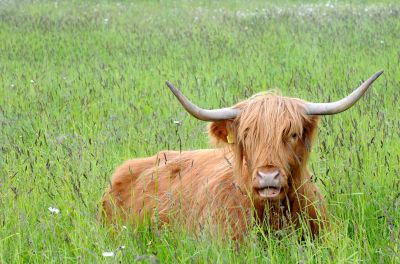Culloden Battlefield’s visitor amenities are creaking under the strain of ever-increasing visitor numbers and will require an overhaul to make them fit for purpose for the next ten years, says owner National Trust for Scotland (NTS).
The signage needs improvement, there is only one entrance to the visitor centre, the car park and café are often at capacity, there is not enough room at the back for admin and storage, and the front desk and doors are struggling to cope- these are some of the issues highlighted by manager Raoul Curtis-Machin.
NTS is at the early stages of looking to the future of the visitor facilities, and has come under fire for trying to alleviate pressure on the café by setting up a catering trailer at the entrance.
Historic Environment Scotland (HES) has warned that the trailer would ‘attract additional activity, increasing the potential impact upon the battlefield.’
Mr Curtis Machin said: “We’re considering all the options, and it’s likely now that we will put the trailer at the side of the visitor centre or in the car park.
“The idea behind it is to cater for the increasing numbers of small coach groups and tour parties who turn up unannounced and may not want to spend an hour and a half in the centre but go straight to the battlefield and stop for a coffee and sandwich.
“The only way we can analyse the effects on the queues inside the visitor centre is to have a second offering.”
NTS launched its Culloden 300 consultation last month to work with public to look at ways of protecting the battlefield permanently from the threat of development.
Mr Curtis-Machin said: “Everything that happens here is the subject of great scrutiny and in a sense this is positive because it means there are some robust protection measures in place. People are being more thorough in their approach to the site.”
Meanwhile Culloden battlefield visitors are now stopping in their tracks before they even get to the centre to admire three new additions, Marsili, Manna and Bean Ruadh.
The objects of admiration are pedigree Highland cows from Leys Castle farm.
Maintenance manager Alex Elliott said the cattle will replace mechanical cutting and spraying to control vegetation.
They join seven rare breed Shetland cattle whose numbers now include two new-born calves, and a small herd of British primitive goats, all used for conservation grazing in different parts of the moor.
